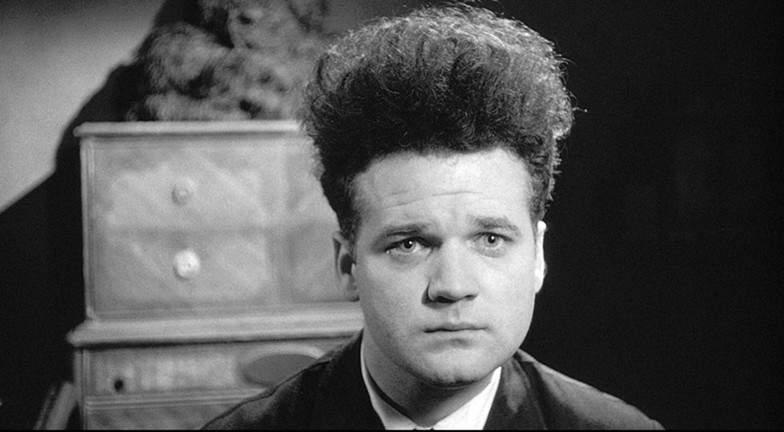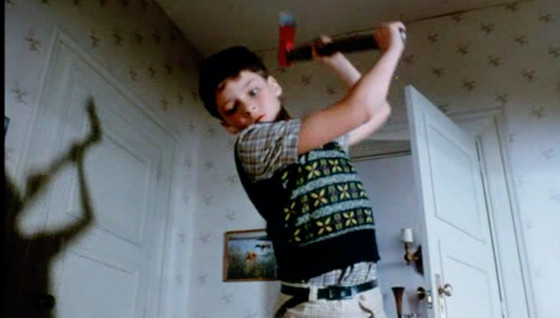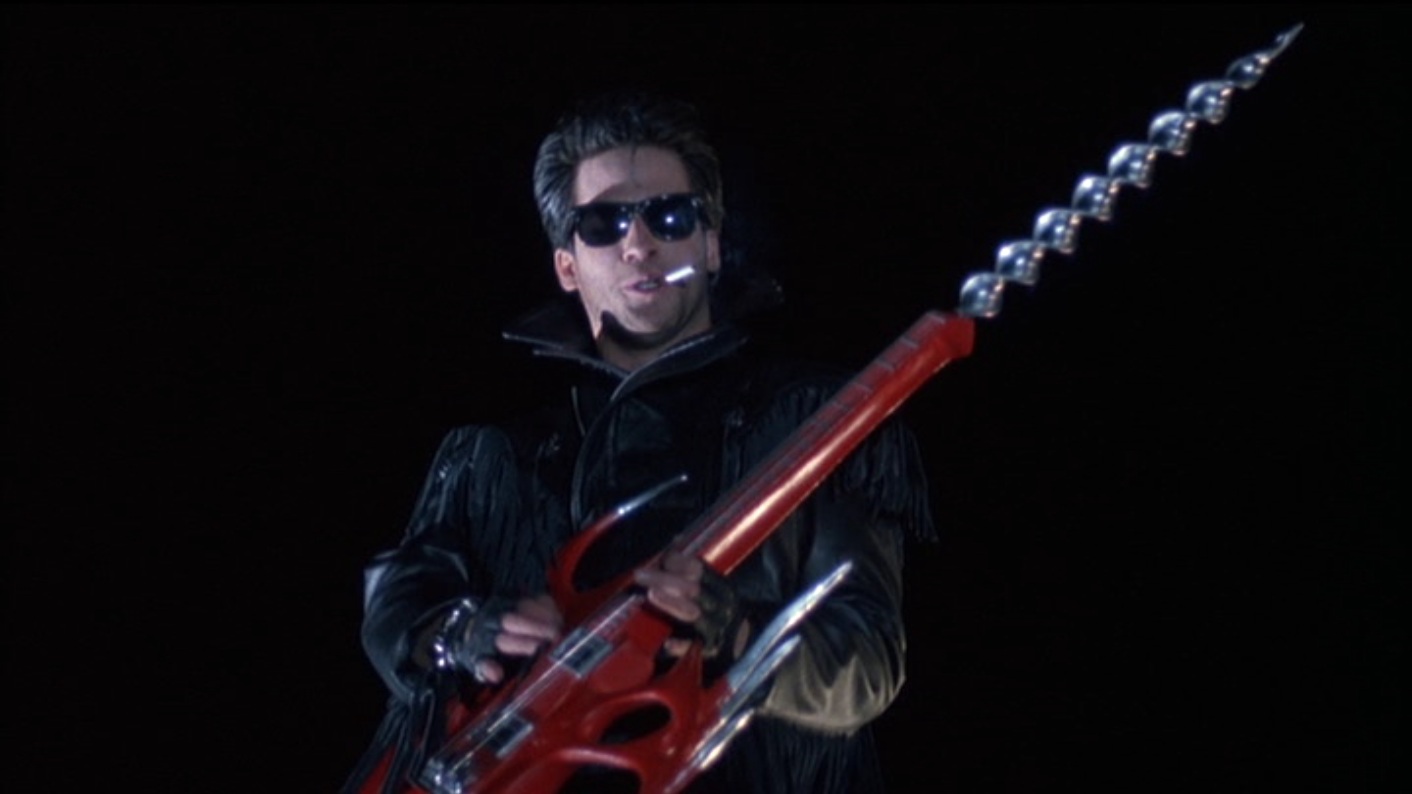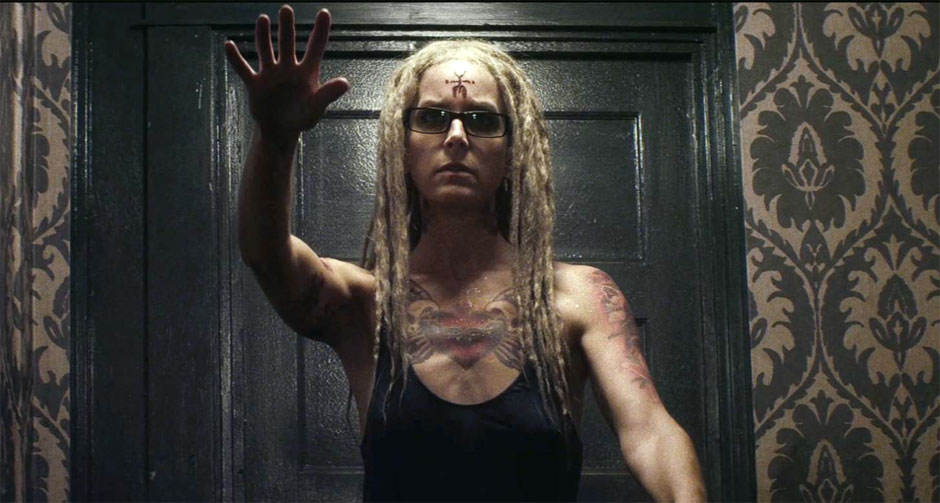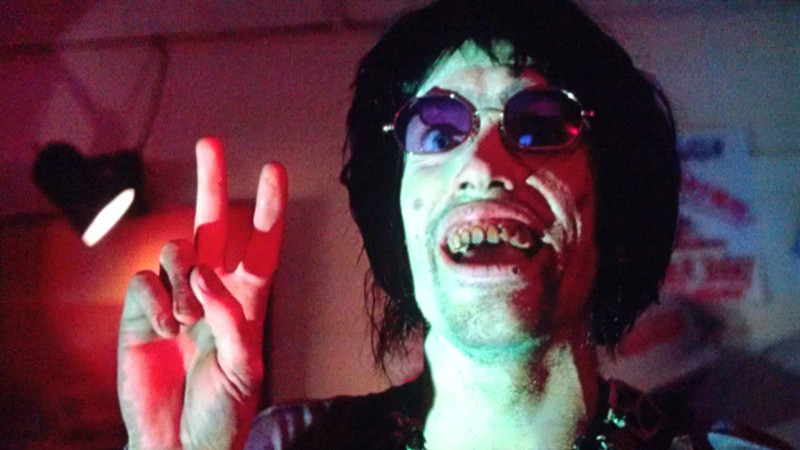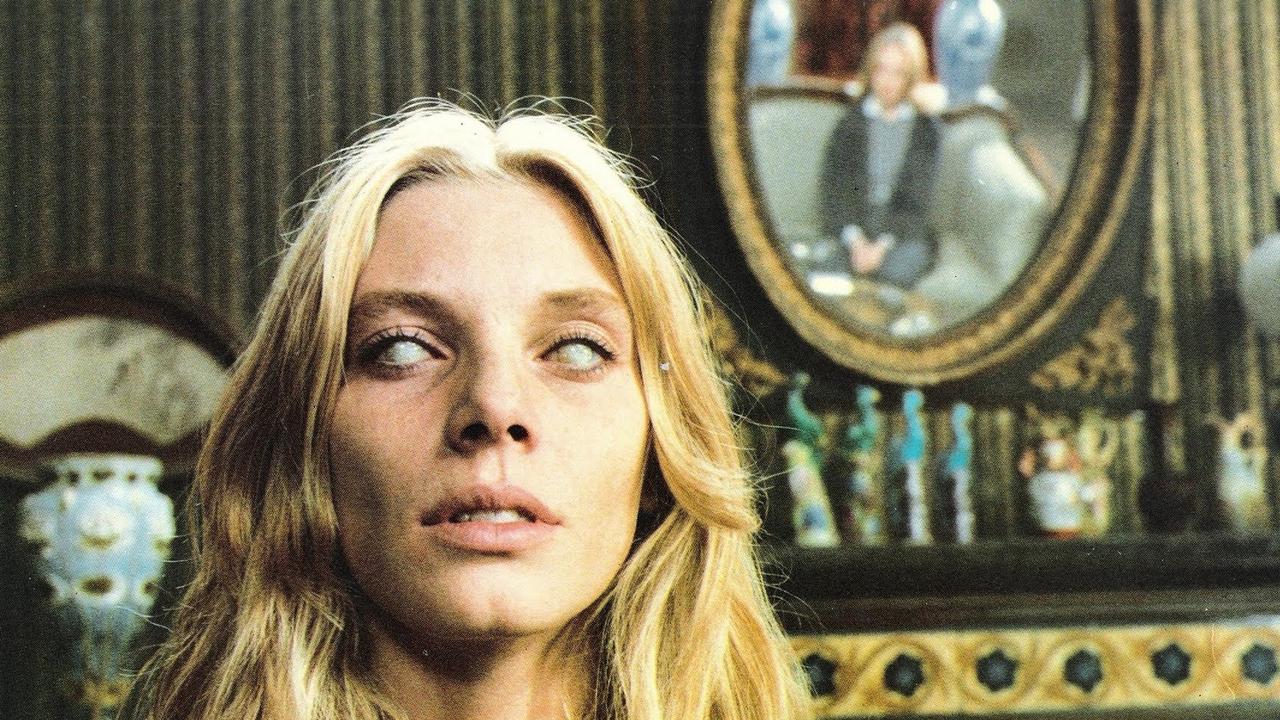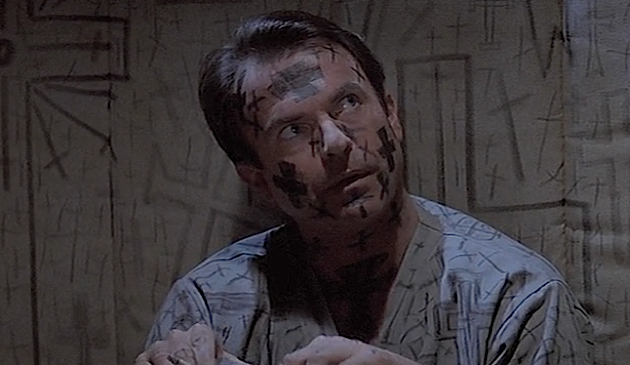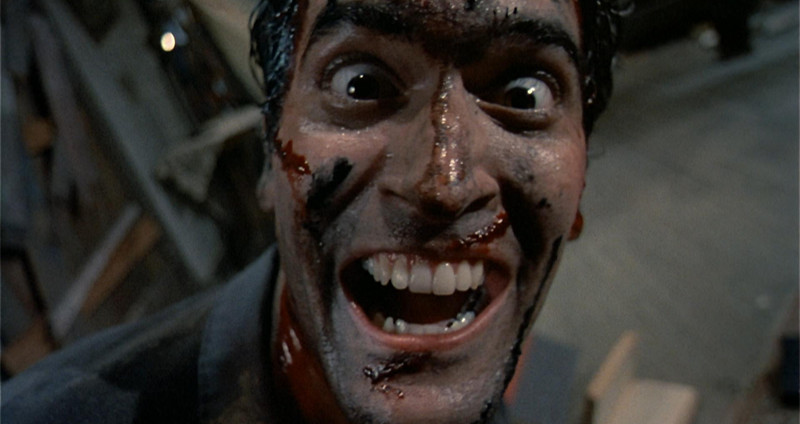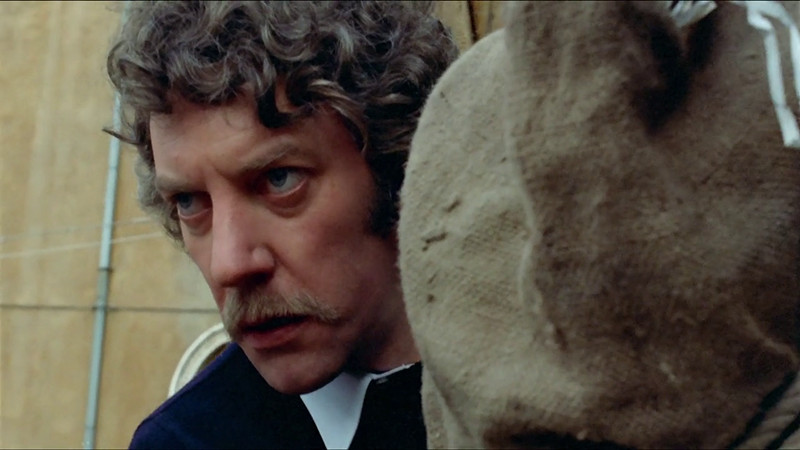
Ever since its earliest incarnations in the form of myths and legends, the horror story has always leaned towards the bizarre and fantastical. Strangeness is in its blood. In fact, aside from the obvious penchant for terror, death and the macabre, an obsession with all things weird is the genre’s most recognisable quality.
Tales of terror have always dwelled on the unusual, have always taken place in a netherworld either slightly or wholly removed from reality. After all, stories of spirits coming back from the dead and people turning into wolves are not exactly what you’d call accounts of normal everyday events, are they?
Over the years horror has not only come to embrace its inherent weirdness, it has also expanded on it, incorporating the strangest, most daring and risqué elements of the artistic and cultural movements of the moment in an attempt to further exaggerate its already unusual qualities.
Consequently, we get hybrids such as Gothic horror, expressionist horror, surreal and avant garde horror which lend the horror story another layer of mystique, depth and perplexing bizarreness. Take, for example, Gothic horror which takes the genre and adds to it musings of existential despondency and explorations of intangible dream terrors seeping into the fabric of our waking world.
Cinema has wholeheartedly embraced the genre’s strangeness and ripeness for hybridisation, and the visual medium allows for even greater realisations of the uncanny.
Colour and lighting can be warped and distorted to create an image with no real life precedents; editing can lend sequences an unnaturally fast or slow pace and can transport the viewer from one time and space to another in an instant; sound can be contrapuntal and jarring, altering the effect of the onscreen images; and, most tantalising of all, logic and narrative can be eschewed entirely.
Film has also created a new strain of weird horror where the strangeness exuded is often completely unintentional. Described by Jeffrey Sconce as paracinema in his article ‘Trashing’ the Academy: Taste, Excess, and an Emerging Politics of Cinematic Style, this new strain attains an aura of strangeness because of inept direction, bad acting and special effects, and the restrictions of a low budget.
The majority of trash and B-Movie horror films are, therefore, strange because of their ineptness, not because of any predetermined plan to imbue them with off-beat characteristics.
This list seeks to highlight some of the most unique examples of weird horror cinema and pinpoint what exactly makes them so strange. The list is, however, by no means exhaustive. To cover every weird horror film ever made would be an impossible task. After all, horror cinema is, by its very nature, a strange and unusual beast and all horror films are, to a certain degree, weird. Instead, think of this an overview, a mere taster of the oddities the genre has to offer.
1. Eraserhead (1977)
David Lynch’s debut feature, Eraserhead is perhaps his most challenging, inaccessible work. The film is one long inescapable nightmare of industrial wastelands, unnerving soundscapes and disturbing, surreal imagery. It remains one of the most utterly strange and unique exercises in avant garde horror, bombarding viewers with such weirdly horrifying images as a monstrous deformed baby, a singing lady who lives in a radiator, and the most terrifying chicken dinner ever.
The film possesses a dense, impenetrable miasma of gelatinous gloom and incomprehensible imagery that is symptomatic of Lynch’s singular cinematic vision. In Eraserhead, Lynch doesn’t so much tell a story as he tries to express intangible moods, thoughts and feelings through a series of metaphorical images.
These abstract images make perfect sense to Lynch but require everyone else to form their own interpretations, or else immerse themselves in the murk and simply let the swathes of strangeness wash over them.
2. Pieces (1982)
One of the most entertainingly bad films of all time, Pieces is gonzo Spanish horror masquerading as a US slasher flick with a touch of whodunit Italian giallo thrown in for good measure. To say this hodgepodge of horror is a bad film is something of an understatement.
It features bad dubbing, stale acting, a nonsensical narrative, and completely superfluous scenes thrown in for padding. However, it is precisely because of this overwhelming ineptness that the film succeeds as a kind of hysterical fever dream. Equal parts video nasty and surreal comedy, Pieces is comprised of a mosaic of bizarre vignettes which coalesce into a strange whole. It eschews any sense of rationality or narrative cohesion in favour of maximum exploitation.
Thus, the viewer is treated to such startlingly bizarre scenes as an out of context skateboarding accident ending in decapitation, a random display of kung fu skills, and a frantic woman shouting “bastard!” over and over again. Pieces is utterly illogical and absolutely ridiculous, but it’s also an undeniably entertaining masterpiece of cult so-bad-it’s-good B-Movie filmmaking.
3. Slumber Party Massacre II (1987)
Quite possibly the closest the slasher film has ever come to surrealist cinema, Slumber Party Massacre II is most certainly the strangest effort to emerge from the stalk n’ slash subgenre. Combining horror tropes, musical interludes and dreamlike, nonsensical imagery, the film possesses a quirky, off-beat quality akin to an avant garde exercise in strangeness.
Throughout the film the viewer is assaulted by irrational, surreal imagery as the heroine, Courtney, experiences a series of increasingly absurd visions. There are giant exploding zits, chickens leaping out of fridges, severed hands in burgers and, strangest of all, a killer who resembles a ‘50s greaser, wields an electric guitar with a drill on the end, and sporadically breaks into song.
Just like surrealist cinema, the line between dream and reality is indistinguishable as it is never clear whether the whole narrative is simply part of a dream or not. Courtney may wake up screaming in a padded cell, inferring that all was merely a dream, but then the guitar drill breaks through the floor making things a lot less clear cut.
What is clear is that, intentional or not, Slumber Party Massacre II is a surrealist film through and through, defying rationality and realism by presenting a deluge of bizarre images that lends the film a dreamlike quality.
4. The Lords of Salem (2012)
Rob Zombie’s fifth live action feature is an ambitious beast; expanding on the surreal elements that bookend his previous films, – starting with the psychedelic MTV madness of House of 1000 Corpses and coming to the fore with the Lynchian white horses and ghostly sirens of Halloween II – The Lords of Salem eschews Zombie’s usual grindhouse leanings in favour of a less visceral, more grandiose arthouse horror approach.
Indeed, whereas his previous output is more indebted to the rawness of Tobe Hooper and Wes Craven’s early films, The Lords of Salem instead looks to the classy, unsettling paranoid strangeness of Stanley Kubrick and Roman Polanski’s forays into horror. With its focus on a young woman residing in an apartment building, chosen by a coven of witches to carry the devil’s spawn, Polanski’s Rosemary’s Baby is an obvious point of inspiration.
However, upon further inspection, it is the ghost of Kubrick that looms most heavily over the proceedings. Recalling the most surreal imagery from both 2001: A Space Odyssey and The Shining, Zombie’s extravagant static shots exude a menacingly beautiful dreamlike quality.
The shots of long foreboding corridors, doors leading to other realms, and grand buildings representing hell bring to mind Kubrick’s unsettling scenes of monoliths in bedrooms and elevators spewing blood. The Lords of Salem never matches Kubrick’s splendid visions and is a somewhat uneven film, but it is full of interesting ideas and ambitions, making it something of a flawed mini masterpiece of modern weird horror.
5. The Texas Chainsaw Massacre 2 (1986)
In the sequel to his seminal The Texas Chain Saw Massacre Tobe Hooper completely defies expectations and, in the process, delivers one of the most absurd black comedies of all time. Stripping away the grimy, relentless nightmare realism of the first film and exposing the gallows humour barely contained beneath, Hooper transforms one of the scariest films ever into a farcical spoof.
Met with almost universal condemnation upon its release, the film’s reputation has grown as critics and fans have come to realise that comedy was the only avenue left to explore. Hooper could never up the terror of the first film so he makes fun of it instead. And, what’s more, he seems to be having a great time doing so, turning Leatherface into a sexually frustrated puppy, sawing The Cook’s behind, and replacing the Hitchhiker with his even more deranged ‘Nam obsessed twin brother Chop Top.
Perhaps the film’s greatest coup, however, is the casting of Dennis Hopper as evangelical Texas Ranger Lefty Enright, a character so deranged he makes the Chain Saw clan seem comparatively normal. It is the addition of Hopper’s presence that makes The Texas Chainsaw Massacre 2 such a strange classic. With his own demented sense of justice, wild eyes, and dual wield chainsaw attack, Lefty elevates an already crazy film into a veritable carnival of the bizarre.
6. The Beyond (1981)
Italian horror cinema has a penchant for combining art with violence, the bizarre with the grotesque, and nowhere is this more evident than in the oeuvre of Lucio Fulci. Almost completely forgoing conventional narrative structures, Fulci instead favours a more episodic, elliptical approach that foregrounds bravura gore set-pieces. Therefore, Fulci’s films possess a very peculiar, somewhat disjointed atmosphere as they are essentially nothing but a procession of ultra violent images.
With only an extremely basic storyline to tie these gory images together, Fulci’s films take on a dreamlike quality as one violent scene follows another with very little context or explanation given. Perhaps the quintessence of Fulci’s unique combination of trash aesthetics and dreamlike surrealism is his seminal zombie epic, The Beyond.
Combing such audaciously gruesome images as tarantulas eating a man’s face with illogical, hallucinatory nightmare visions and spatial and temporal displacements, the film immerses the viewer in a terrifying dreamscape. In The Beyond anything can, and probably will, happen as logic and conventional narrative film practices are forgotten as Fulci confuses, shocks and astounds with visceral exploitation excess.
7. In the Mouth of Madness (1994)
One of the most underrated horror films of the 1990s, John Carpenter’s In the Mouth of Madness is a true Lovecraftian nightmare. It is one of the few films that almost manages to bring to the screen the intangible, indescribable horrors of a H. P. Lovecraft tale. Indeed, the very fabric of the film seems to be permeated by an apocalyptic atmosphere of impending doom, as if the Great Old Ones themselves are using Carpenter as a conduit to take corporeal form.
Like a typical Lovecraft tale, Carpenter’s film centres around a narrator recounting the unspeakable terrors that have driven him to madness. What begins as frightening dreams and strange occurrences turns into an inescapable nightmare where the simple act of reading a book can bring about the end of the world.
Lovecraftian imagery abounds in the form of a quiet New England town where monstrous cults hide, gateways that lead to other dimensional planes appear, and slimy demons secretively plot their return and subsequent reign over mankind. Adding an extra layer of weirdness, Carpenter blurs dreams and reality, fact and fiction, film and reality to shocking effect.
Taking the form of a postmodern comment on the power of horror authors like Lovecraft and Stephen King, and directors like Carpenter himself, the film ends with the narrator sat in a cinema watching the film In the Mouth of Madness as reality collapses, the world as we know it ends, and the reign of the Great Old Ones begins.
8. Evil Dead II (1987)
Taking the gritty video nasty quality of the original The Evil Dead and exaggerating it tenfold, Sam Raimi’s sequel/remake turns splatter into an extreme form of slapstick, highlighting the fundamental absurdity of extreme horror film violence. Raimi makes it clear to the viewer that horror doesn’t necessarily equate nastiness or terror, that it can just as easily be used as a springboard for comedy.
Like its comedy horror hybrid forebears in Carry on Screaming and An American Werewolf in London, Evil Dead II foregrounds the notion that death is essentially one big joke. We all have to die, so why dwell on morbidity when we can laugh at it? Expertly executed, Evil Dead II takes everything that is nasty and horrifying about so called serious horror and plays it for laughs, exposing the inherent silliness that lies at the heart of even the most hardcore of cinematic nightmares.
This can clearly be seen in the film’s transformation of the hero into a bumbling fool, blood that becomes a cartoon green liquid, and a severed hand made into a scuttling, mischief making little tyrant.
The scene that really lets the viewer know it is ok to laugh is when Bruce Campbell’s Ash, overcome with a bad case of cabin fever, begins to laugh along with a deer head, a lamp, and various other bits of assorted furniture. As he begins to realise how ridiculous his predicament has become he can’t help but laugh, and neither can we.
